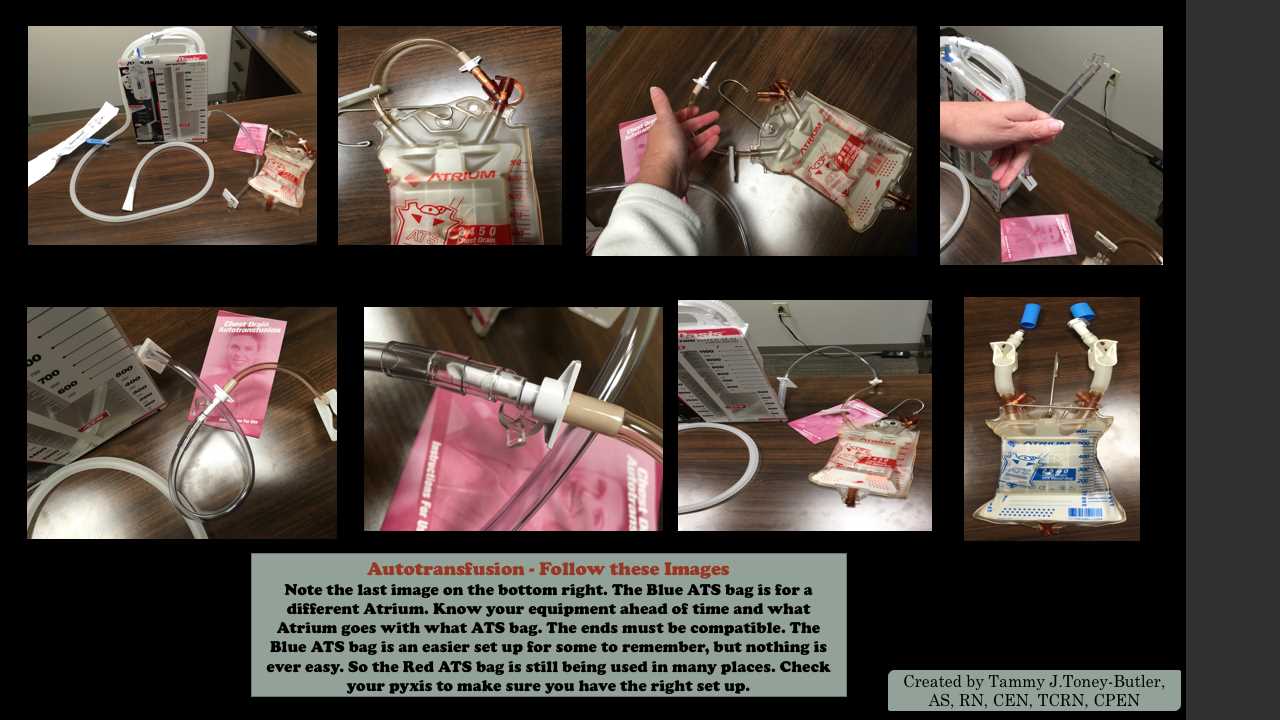[1]
Moore K. Injury Prevention and Trauma Mortality. Journal of emergency nursing. 2016 Sep:42(5):457-8. doi: 10.1016/j.jen.2016.06.015. Epub
[PubMed PMID: 27594080]
[2]
Pathak SM, Jindal AK, Verma AK, Mahen A. An epidemiological study of road traffic accident cases admitted in a tertiary care hospital. Medical journal, Armed Forces India. 2014 Jan:70(1):32-5. doi: 10.1016/j.mjafi.2013.04.012. Epub 2013 Aug 30
[PubMed PMID: 24623944]
Level 2 (mid-level) evidence
[3]
Pfeifer R,Tarkin IS,Rocos B,Pape HC, Patterns of mortality and causes of death in polytrauma patients--has anything changed? Injury. 2009 Sep;
[PubMed PMID: 19540488]
[4]
Kauvar DS, Lefering R, Wade CE. Impact of hemorrhage on trauma outcome: an overview of epidemiology, clinical presentations, and therapeutic considerations. The Journal of trauma. 2006 Jun:60(6 Suppl):S3-11
[PubMed PMID: 16763478]
Level 3 (low-level) evidence
[5]
Campbell HE,Stokes EA,Bargo DN,Curry N,Lecky FE,Edwards A,Woodford M,Seeney F,Eaglestone S,Brohi K,Gray AM,Stanworth SJ, Quantifying the healthcare costs of treating severely bleeding major trauma patients: a national study for England. Critical care (London, England). 2015 Jul 6;
[PubMed PMID: 26148506]
[6]
Duffy G,Tolley K, Cost analysis of autologous blood transfusion, using cell salvage, compared with allogeneic blood transfusion. Transfusion medicine (Oxford, England). 1997 Sep;
[PubMed PMID: 9316218]
[7]
Perez P, Salmi LR, Folléa G, Schmit JL, de Barbeyrac B, Sudre P, Salamon R, BACTHEM Group, French Haemovigilance Network. Determinants of transfusion-associated bacterial contamination: results of the French BACTHEM Case-Control Study. Transfusion. 2001 Jul:41(7):862-72
[PubMed PMID: 11452153]
Level 2 (mid-level) evidence
[8]
Williamson LM,Lowe S,Love EM,Cohen H,Soldan K,McClelland DB,Skacel P,Barbara JA, Serious hazards of transfusion (SHOT) initiative: analysis of the first two annual reports. BMJ (Clinical research ed.). 1999 Jul 3;
[PubMed PMID: 10390452]
[9]
Kuehnert MJ,Roth VR,Haley NR,Gregory KR,Elder KV,Schreiber GB,Arduino MJ,Holt SC,Carson LA,Banerjee SN,Jarvis WR, Transfusion-transmitted bacterial infection in the United States, 1998 through 2000. Transfusion. 2001 Dec
[PubMed PMID: 11778062]
[10]
Menis M, Forshee RA, Anderson SA, McKean S, Gondalia R, Warnock R, Johnson C, Mintz PD, Worrall CM, Kelman JA, Izurieta HS. Febrile non-haemolytic transfusion reaction occurrence and potential risk factors among the U.S. elderly transfused in the inpatient setting, as recorded in Medicare databases during 2011-2012. Vox sanguinis. 2015 Apr:108(3):251-61. doi: 10.1111/vox.12215. Epub 2014 Dec 3
[PubMed PMID: 25470076]
[11]
Blundell J, Experiments on the Transfusion of Blood by the Syringe. Medico-chirurgical transactions. 1818;
[PubMed PMID: 20895353]
[12]
Carless PA,Henry DA,Moxey AJ,O'Connell D,Brown T,Fergusson DA, Cell salvage for minimising perioperative allogeneic blood transfusion. The Cochrane database of systematic reviews. 2010 Apr 14;
[PubMed PMID: 20393932]
Level 1 (high-level) evidence
[13]
Klein AA, Bailey CR, Charlton AJ, Evans E, Guckian-Fisher M, McCrossan R, Nimmo AF, Payne S, Shreeve K, Smith J, Torella F. Association of Anaesthetists guidelines: cell salvage for peri-operative blood conservation 2018. Anaesthesia. 2018 Sep:73(9):1141-1150. doi: 10.1111/anae.14331. Epub 2018 Jul 10
[PubMed PMID: 29989144]
[14]
Garcia JH, Coelho GR, Feitosa Neto BA, Nogueira EA, Teixeira CC, Mesquita DF. Liver transplantation in Jehovah's Witnesses patients in a center of northeastern Brazil. Arquivos de gastroenterologia. 2013 Apr:50(2):138-40
[PubMed PMID: 23903624]
[15]
Selo-Ojeme DO,Onwude JL,Onwudiegwu U, Autotransfusion for ruptured ectopic pregnancy. International journal of gynaecology and obstetrics: the official organ of the International Federation of Gynaecology and Obstetrics. 2003 Feb;
[PubMed PMID: 12566181]
[16]
Sjöholm A, Älgå A, von Schreeb J. A Last Resort When There is No Blood: Experiences and Perceptions of Intraoperative Autotransfusion Among Medical Doctors Deployed to Resource-Limited Settings. World journal of surgery. 2020 Dec:44(12):4052-4059. doi: 10.1007/s00268-020-05749-y. Epub 2020 Aug 27
[PubMed PMID: 32856098]
[18]
Esper SA,Waters JH, Intra-operative cell salvage: a fresh look at the indications and contraindications. Blood transfusion = Trasfusione del sangue. 2011 Apr;
[PubMed PMID: 21251468]
[19]
Spahn DR, Bouillon B, Cerny V, Coats TJ, Duranteau J, Fernández-Mondéjar E, Filipescu D, Hunt BJ, Komadina R, Nardi G, Neugebauer E, Ozier Y, Riddez L, Schultz A, Vincent JL, Rossaint R. Management of bleeding and coagulopathy following major trauma: an updated European guideline. Critical care (London, England). 2013 Apr 19:17(2):R76. doi: 10.1186/cc12685. Epub 2013 Apr 19
[PubMed PMID: 23601765]
[20]
Lim G,Melnyk V,Facco FL,Waters JH,Smith KJ, Cost-effectiveness Analysis of Intraoperative Cell Salvage for Obstetric Hemorrhage. Anesthesiology. 2018 Feb;
[PubMed PMID: 29194062]
[21]
Waters JH, Intraoperative blood recovery. ASAIO journal (American Society for Artificial Internal Organs : 1992). 2013 Jan-Feb;
[PubMed PMID: 23232181]
[22]
Waters JH, Lukauskiene E, Anderson ME. Intraoperative blood salvage during cesarean delivery in a patient with beta thalassemia intermedia. Anesthesia and analgesia. 2003 Dec:97(6):1808-1809. doi: 10.1213/01.ANE.0000087046.91072.E8. Epub
[PubMed PMID: 14633564]
[23]
Catling S, Williams S, Freites O, Rees M, Davies C, Hopkins L. Use of a leucocyte filter to remove tumour cells from intra-operative cell salvage blood. Anaesthesia. 2008 Dec:63(12):1332-8. doi: 10.1111/j.1365-2044.2008.05637.x. Epub
[PubMed PMID: 19032302]

